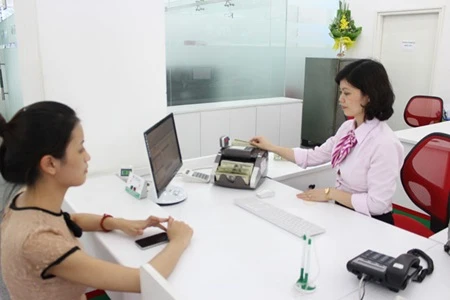 The State Bank of Vietnam next year will issue a new mechanism to manage the foreign exchange rate more flexibly to comply with changes on the global market.(Source :VNA)
The State Bank of Vietnam next year will issue a new mechanism to manage the foreign exchange rate more flexibly to comply with changes on the global market.(Source :VNA) Hanoi (VNA) – The State Bank of Vietnam (SBV) will issue a new mechanism on foreign exchange management next year to cope with changes in the market, especially the global market.
SBV Governor Nguyen Van Binh said that under the new mechanism the reference rate, or the inter-bank exchange rate, would be managed more flexibly and could be changed regularly, even daily.
It will replace the current mechanism that has been applied for the past four years. Under the current mechanism, the central bank manages the foreign exchange market through a relatively stable inter-bank rate in conjunction with trading bands.
"The new policy would better reflect the market, especially when there are major changes in the global market," Binh said.
He said that the new policy would also restrict the market sentiment and enhance transparency, while contributing towards minimising speculation of the US dollar in the local market.
According to the central bank, for the past few years, dollar speculation often rose in mid and year-end when speculators guessed that the central bank would adjust the reference rate after keeping the rates stable for a long time.
Binh expected the regular change in the reference rates to help avoid speculation as speculators could face the high risk of losses. Only people with real demands would buy the greenback, he forecast.
According to Binh, due to Vietnam's conditions for the past four years, the central bank had to apply a foreign exchange mechanism in which it often pledged at the beginning of the year to keep the inter-bank rate relatively stable and fluctuated only around 2 percent in the year, in conjunction with a trading band of roughly 2-3 percent.
This policy has contributed to stabilising the macro-economy, enhancing the trust of investors on the dong, increasing foreign currency reserves and attracting foreign investment.
Binh admitted that the current mechanism was not in accordance with the market mechanism as the market, and other factors related to the foreign exchange market, changed daily.
However, the policy has now completed its mission and it is now time for a change, Binh said.
With the new mechanism, the foreign exchange rate could be more flexible, changed daily and be under the central bank's proactive control, Binh said.
Local people and enterprises would get used to the change without anxiety that caused the market sentiment or speculation as witnessed previously.
Binh said that in several other countries, the foreign exchange rates are adjusted several percent daily but their residents do not worry too much. This is because of the success of these countries in fighting against dollarisation and maintaining the value of their local currencies.
Binh also affirmed that the central bank would not encourage the deposit and lending of the dollar. After cutting the interest rate of the dollar deposits to zero percent, Binh said that the central bank next year could even apply a negative interest rate policy to make the dollar deposit unattractive.
After the governor's statement, commercial banks on December 28 cut the exchange rate of the US dollar against the dong by 20-35 VND per dollar, keeping the rate far away from the cap of 22,547 VND regulated by the central bank.-VNA






















